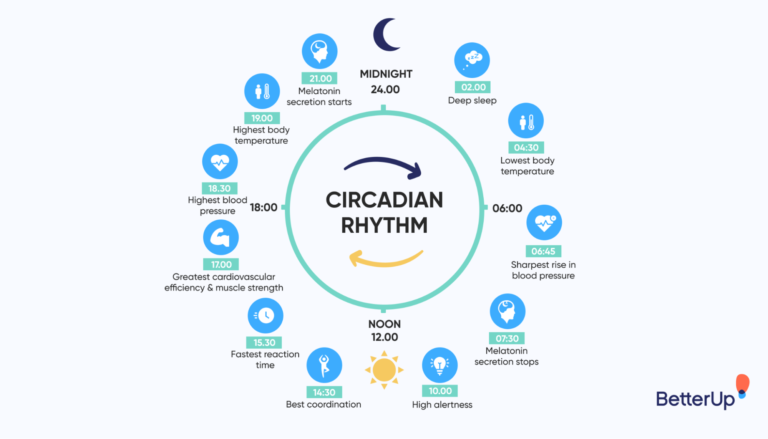Inbox Zero: Taming Your Email for a Stress-Free and Productive Day

Understanding the Impact of Email Overload on Productivity and Stress Levels

Email overload has become a prevalent issue in today’s digital age, impacting both productivity and stress levels. With the increasing volume of emails received on a daily basis, individuals often find themselves overwhelmed and unable to keep up with the constant influx of messages. This overload can have a detrimental effect on productivity, as it diverts attention away from important tasks and leads to wasted time and energy.
Furthermore, the stress caused by email overload can have severe consequences on one’s mental well-being. The constant pressure to respond quickly to emails and keep up with a never-ending stream of messages can create feelings of anxiety and overwhelm. Studies have shown that prolonged exposure to high levels of email-related stress can increase the risk of burnout and negatively impact overall job satisfaction. It is crucial, therefore, to understand the impact of email overload on both productivity and stress levels in order to develop effective strategies for managing this issue.
Identifying the Root Causes of Email Overload and Inefficiency

Email overload and inefficiency can significantly impact productivity and contribute to increased stress levels. It is crucial to identify the root causes of these challenges in order to effectively address them. One of the primary causes of email overload is the sheer volume of messages received on a daily basis. With the ease of sending emails, it has become a preferred mode of communication for many individuals and organizations. As a result, inboxes can quickly become inundated with a multitude of messages, making it difficult to differentiate between important and trivial emails.
Another significant factor contributing to email overload is the lack of clear communication guidelines and expectations. Without clear boundaries, individuals may feel obligated to respond to every email immediately, leading to a constant cycle of checking and replying to messages. Moreover, ineffective email management practices, such as failing to prioritize or organize emails, can further exacerbate the problem by adding unnecessary clutter to inboxes.
By understanding these root causes, individuals and organizations can develop targeted strategies to address email overload and inefficiency. This may involve implementing effective email filtering and automation techniques, as well as establishing clear goals and priorities for email management. Additionally, creating personalized email templates for common responses and adopting efficient communication strategies can streamline the email process and save valuable time. Ultimately, identifying and addressing the root causes of email overload can lead to improved productivity and reduced stress levels.
Setting Clear Goals and Priorities to Streamline Your Email Management

When it comes to managing your email effectively, setting clear goals and priorities is essential. Without a clear roadmap, it’s easy to get overwhelmed by the sheer volume of incoming messages and lose focus on what’s most important. By taking the time to establish your goals and priorities, you can streamline your email management and increase your overall productivity.
Start by determining what your primary goals are when it comes to email. Are you looking to respond to inquiries in a timely manner? Do you want to stay updated on important projects or collaborations? Once you have a clear understanding of your goals, you can then prioritize your email accordingly. This means setting aside dedicated time for certain tasks, such as responding to urgent messages or reviewing project updates. By knowing what needs your immediate attention and what can be addressed later, you can avoid feeling overwhelmed and ensure that you are making the most efficient use of your time.
Establishing Effective Email Filing and Organizational Systems
Email overload and inefficiency can cause significant stress and reduce productivity in the workplace. To effectively manage your emails, it is important to establish filing and organizational systems that streamline your workflow. One approach is to categorize your emails based on priority or topic. This allows you to quickly locate and address important messages, while also reducing the clutter in your inbox.
Another helpful strategy is to create separate folders or labels for different types of emails, such as “Action Required,” “Follow-up,” or “Reference.” By organizing your emails in this way, you can easily identify which ones need immediate attention and which ones can be dealt with at a later time. Furthermore, implementing a consistent naming convention for your folders can further enhance your ability to locate specific emails when needed. Additionally, consider setting up filters or rules to automatically route certain types of emails into specific folders, saving you time and effort in manual organization.
In addition to organizing your emails, establishing an effective system for archiving old messages is vital for maintaining a clutter-free inbox. Create an archive folder where you can store emails that no longer require immediate attention but might be useful for future reference. Regularly reviewing and decluttering your inbox by moving older emails to the archive folder will not only help you stay organized but also improve your email management efficiency.
By establishing these effective filing and organizational systems, you can streamline your email management and reduce the overwhelming feeling of email overload. With a well-organized inbox, you can focus your attention on priority tasks and enhance your overall productivity in the workplace.
Certainly! Here’s a short data table on effective email filing and organizational systems:
| Effective Email Filing and Organizational Systems | Key Concepts | Credible Source |
|---|---|---|
| Create Folders for Categories | – Key Concept: Organize emails by creating folders based on categories or projects, allowing for a systematic arrangement that streamlines retrieval and reduces clutter. | The Muse – The Only Five Email Folders Your Inbox Will Ever Need |
| – Considerations: Categorizing emails into folders facilitates quick access and helps maintain a well-organized inbox. | ||
| Use Descriptive Subject Lines | – Key Concept: Encourage clear communication and ease of retrieval by using descriptive subject lines, making it simpler to identify the content and purpose of each email. | HubSpot – How to Write the Perfect Email Subject Line |
| – Considerations: Descriptive subject lines contribute to efficient email management and reduce the need for extensive searching. | ||
| Set Up Filters and Rules | – Key Concept: Utilize email filters and rules to automatically sort incoming emails into designated folders, saving time and ensuring important messages are easily accessible. | Microsoft Support – Organize your Inbox with Archive, Sweep, and other tools in Outlook.com |
| – Considerations: Automation helps manage the influx of emails, keeping your inbox organized and reducing manual effort. | ||
| Regular Inbox Cleanup Sessions | – Key Concept: Schedule regular sessions to review and declutter your inbox, deleting unnecessary emails and filing important ones promptly to maintain a well-organized email system. | Lifehacker – How to Declutter Your Digital Life |
| – Considerations: Periodic cleanup sessions prevent inbox overflow and contribute to a more efficient email management routine. | ||
| Archive Old Emails | – Key Concept: Archive older emails that are no longer immediately relevant but may be useful for reference. Archiving helps keep the inbox clutter-free while preserving important information. | Google Workspace Learning Center – Archive or mute Gmail messages |
| – Considerations: Archiving strikes a balance between organization and accessibility for less frequently accessed emails. | ||
| Prioritize and Flag Important Emails | – Key Concept: Prioritize emails by flagging or marking them as important, ensuring that critical messages are easily identifiable and receive prompt attention. | Business News Daily – How to Prioritize Emails When Everything Is Important |
| – Considerations: Flagging important emails helps maintain focus on crucial tasks and responses within a cluttered inbox. |
Developing Efficient Email Communication Strategies
Effective email communication strategies are essential for streamlining your workflow and improving productivity. One key aspect is ensuring clear and concise messages. Keep your emails focused and specific, avoiding unnecessary details or tangents. This will not only save time for both you and the recipient but also minimize the chances of miscommunication or confusion. Furthermore, by using bullet points or numbering, you can make your messages more organized and easier to digest.
Another important strategy is to prioritize your emails and respond promptly to urgent matters. Set aside dedicated time slots during your day to review and reply to emails, ensuring that important requests or deadlines are not overlooked. Additionally, flagging or categorizing emails based on their level of urgency can help you stay on top of your inbox, making it easier to identify and address high-priority tasks.
By implementing these efficient email communication strategies, you can streamline your workflow, increase productivity, and ensure effective collaboration with your colleagues. Remember, effective communication is not only about getting your message across but also about understanding and responding to the needs of others efficiently.
Implementing Time-Saving Email Filtering and Automation Techniques
Email overload can be a major source of productivity drain and stress in today’s fast-paced work environment. To combat this issue, implementing time-saving email filtering and automation techniques can be highly effective. By utilizing features such as filters and rules, you can automatically sort incoming emails into specific folders based on criteria such as sender, subject, or keywords.
Automation can also be applied to routine tasks such as email forwarding or marking certain emails as read. This not only helps to reduce the time spent on repetitive actions but also ensures that important emails are prioritized and attended to promptly. By streamlining your email management through filtering and automation, you can free up valuable time and mental energy for more important tasks, ultimately boosting your overall productivity.
Creating Personalized Email Templates for Common Responses
Creating personalized email templates for common responses can be a time-saving and efficient strategy for managing your inbox. By creating templates for frequently asked questions or common requests, you can streamline your email communication process and ensure consistency in your responses. These templates can be easily customized to address the specific needs of each recipient, while still maintaining a professional tone.
When creating these templates, it is important to consider the specific information that needs to be included in each response. For example, as a gynaecologist doctor, you may receive inquiries about common pregnancy concerns or reproductive health issues. By pre-writing responses that address these topics, you can save valuable time and ensure that accurate and helpful information is provided to your patients.
In addition to saving time, personalized email templates can also help to improve the overall quality of your responses. By carefully crafting these templates, you can ensure that important information is not overlooked and that your communication remains clear and concise. This can be especially important when discussing sensitive or complex topics, as it allows you to provide accurate and well thought-out responses to your recipients.
Prioritizing and Scheduling Email Tasks for Increased Productivity
To increase productivity and effectively manage your email tasks, prioritization and scheduling are essential. By implementing these strategies, you can streamline your workflow and ensure that your most important emails receive the attention they deserve.
First, it’s important to assess the urgency and importance of each email that arrives in your inbox. This can be done by categorizing emails into different levels of priority, such as high, medium, and low. High priority emails require immediate attention, while low priority emails can be addressed at a later time. By assigning priority levels to your emails, you can focus on handling the most critical tasks first and avoid getting overwhelmed by less urgent matters.
Once you have prioritized your emails, it’s crucial to create a schedule or allocate dedicated time slots for email management. This allows you to dedicate focused attention to your emails without succumbing to constant interruptions throughout the day. By blocking specific time periods for email tasks, you can maintain better control over your schedule, reduce stress levels, and increase overall productivity.
Remember, effective prioritization and scheduling are key to managing your email workload efficiently. By establishing a clear hierarchy of priorities and dedicating specific time slots for email management, you can enhance your productivity and ensure that no important tasks slip through the cracks.
Adopting Effective Email Etiquette for Clear and Concise Communication
Effective email etiquette is crucial for maintaining clear and concise communication in today’s fast-paced digital world. When crafting an email, it is important to use a professional and respectful tone. Avoid using excessive capitalization or excessive exclamation marks, as they can come across as unprofessional and may be interpreted as shouting. Additionally, be mindful of the length of your email, as lengthy messages can easily overwhelm and confuse the recipient. Keeping your emails concise and to the point will ensure that your message is understood quickly and effectively.
Another key aspect of effective email etiquette is ensuring that your message is well-structured and organized. Start by clearly stating the purpose of your email in the subject line, as this will grab the recipient’s attention and provide a quick overview of what the email entails. Use short paragraphs and bullet points to break up the content, making it easier for the recipient to read and comprehend. Additionally, use a professional email signature that includes your name, title, and contact information to provide a cohesive and professional appearance to your emails. By adopting these practices, you can enhance your email communication and foster clearer and more efficient exchanges with your colleagues and clients.
Implementing Strategies to Minimize and Manage Email Distractions
Email distractions can significantly impact our productivity and focus, making it essential to implement strategies to minimize their effects. One effective technique is to establish specific times for checking and responding to emails instead of constantly checking them throughout the day. By dedicating specific blocks of time to concentrate on email management, we can reduce interruptions and stay focused on important tasks at hand. Additionally, adopting a systematic approach to organizing and categorizing emails can streamline the retrieval process and minimize distractions. Creating folders to categorize emails based on urgency or topic can help prioritize our attention and ensure that we address important messages promptly.
Another strategy to manage email distractions is to utilize email filtering and automation techniques. Many email clients offer features that allow users to automatically filter incoming emails based on pre-defined rules. By setting up filters to divert non-essential or low-priority messages to specific folders, we can prevent them from cluttering our inbox and diverting our attention. Moreover, setting up email automation tools can help streamline repetitive tasks, such as sending acknowledgments or follow-up messages. These tools can save valuable time and minimize distractions by allowing us to focus on more pressing matters. By combining these techniques, we can effectively minimize and manage email distractions, enabling us to enhance our productivity and maintain our focus on critical tasks.
Utilizing Email Productivity Tools and Applications
In today’s digital age, email has become an integral part of our personal and professional lives. However, the sheer volume of emails can often overwhelm us, causing a significant decline in productivity and an increase in stress levels. This is where email productivity tools and applications come into play, offering a range of features and functionalities to help streamline email management and improve overall efficiency.
One such tool is email filtering, which allows you to automatically categorize and prioritize incoming emails based on predefined rules. By setting up filters, you can ensure that important emails land right in your inbox, while less urgent ones are sorted into folders or marked for later review. This not only saves time but also minimizes distractions, enabling you to focus on the most crucial tasks at hand. Additionally, email automation techniques can further enhance productivity by automating repetitive actions, such as sending out standard responses or scheduling emails for specific times. By harnessing the power of these tools and applications, you can regain control over your inbox and boost efficiency in your email communication.
Learning Effective Email Search and Retrieval Techniques
One of the key challenges faced by individuals in managing their email overload is the ability to efficiently search and retrieve important emails when needed. Learning effective email search and retrieval techniques can greatly enhance productivity and save valuable time.
One strategy for improving email search capabilities is to utilize advanced search features and filters available within email clients. By using specific keywords, dates, or sender criteria, users can narrow down their search and locate desired emails more quickly. Additionally, creating folders and labeling emails with relevant tags can facilitate efficient retrieval, especially when combined with the search function. Organizing emails based on projects, priorities, or categories can further streamline the search process.
As individuals continue to receive numerous emails on a daily basis, it becomes imperative to implement strategies that maximize productivity and minimize stress. Learning effective email search and retrieval techniques is a crucial step in this process. By harnessing the power of advanced search features, utilizing filters, and implementing effective organizational systems, individuals can effectively manage their email overload and improve their overall productivity.
Establishing Healthy Boundaries and Limitations for Email Usage
Establishing healthy boundaries and limitations for email usage is vital in maintaining work-life balance and preventing burnout. By setting clear guidelines for when, where, and how often to check and respond to emails, individuals can regain control of their time and reduce the constant need to be connected.
One effective strategy is to establish designated email times throughout the day. Instead of constantly checking emails as they arrive, allocate specific time slots to focus solely on email management. This approach allows for more concentrated and efficient task completion, as interruptions are minimized, and attention is directed towards other important work. Additionally, it is crucial to communicate these boundaries with colleagues and clients to manage expectations and create a culture of respect for personal time.
Implementing limitations on email usage also involves disconnecting during non-working hours. Constant attachment to work-related emails can lead to blurred boundaries between personal and professional lives, leading to increased stress levels and decreased productivity. By consciously switching off email notifications and resisting the urge to check emails outside of designated work hours, one can restore a sense of control over their personal time and prioritize self-care. Protecting personal time is essential for mental well-being and allows for rejuvenation and quality time with loved ones.
In conclusion, establishing healthy boundaries and limitations for email usage is crucial for overall well-being and maintaining a healthy work-life balance. By allocating dedicated email times, communicating these boundaries with colleagues, and disconnecting during non-working hours, individuals can regain control over their time and reduce stress levels. It is essential to prioritize personal time and set limits to ensure productivity, mental well-being, and a healthy integration of work and personal life.
Continuously Evaluating and Adjusting Your Email Management Strategies
One of the key aspects of effectively managing your email is to continuously evaluate and adjust your strategies. As technology and communication trends evolve, it’s important to stay up-to-date with the latest tools and techniques to keep your email management efficient and productive.
Regularly reviewing your email management strategies allows you to identify areas of improvement and make necessary adjustments. This could involve reassessing your email filing and organizational systems, evaluating the effectiveness of your email communication strategies, or exploring new time-saving email filtering and automation techniques. By regularly evaluating and adjusting your approach, you can ensure that your email management practices align with your goals and priorities, enabling you to stay focused and reduce stress levels.
How does email overload affect productivity and stress levels?
Email overload can significantly impact productivity by causing distractions and taking up valuable time. It can also increase stress levels due to the pressure of managing a large volume of emails and the fear of missing important information.
What are some common causes of email overload and inefficiency?
Common causes include excessive email volume, unnecessary email threads, lack of organization and filing systems, ineffective communication practices, and failure to prioritize and manage tasks effectively.
How can I streamline my email management by setting clear goals and priorities?
Setting clear goals and priorities involves identifying the most important emails and tasks, categorizing them accordingly, and allocating specific time slots for email management. This helps in focusing on essential activities and reducing time spent on less important emails.
What are some effective strategies for email filing and organization?
Effective email filing and organizational systems include creating folders or labels to categorize emails, using filters and rules to automatically sort incoming emails, and regularly archiving or deleting old and irrelevant messages.
How can I develop efficient email communication strategies?
Efficient email communication strategies involve practicing concise and clear writing, avoiding unnecessary back-and-forth conversations, using subject lines effectively, and utilizing bullet points or numbered lists for easier readability.
Are there any time-saving email filtering and automation techniques?
Yes, time-saving techniques include setting up filters to automatically route emails to specific folders, using automated responses or templates for common inquiries, and utilizing email rules to prioritize or flag important messages.
How can personalized email templates help in managing emails?
Personalized email templates can save time by providing pre-written responses for common inquiries or requests. By customizing and saving these templates, you can quickly respond to emails without having to type the same content repeatedly.
How can I prioritize and schedule email tasks for increased productivity?
Prioritizing and scheduling email tasks involve categorizing emails based on urgency and importance, creating a to-do list or using task management tools, and allocating specific time slots for email-related activities.
What are some effective email etiquette practices for clear communication?
Effective email etiquette includes using proper salutations and greetings, being concise and to the point, avoiding the use of excessive capitalization or exclamation marks, and always proofreading before sending.
How can I minimize and manage email distractions?
Strategies to minimize and manage email distractions include setting specific times for checking and responding to emails, turning off email notifications, and creating a distraction-free email environment.
Are there any email productivity tools and applications that can help?
Yes, there are various email productivity tools and applications available, such as email tracking tools, email management software, and scheduling assistants, that can help streamline and enhance email management processes.
What are some effective techniques for searching and retrieving emails?
Effective email search and retrieval techniques involve using advanced search operators and keywords, organizing emails into specific folders or labels, and utilizing search filters and sorting options provided by email clients.
How can I establish healthy boundaries and limitations for email usage?
Establishing healthy boundaries and limitations involves setting specific times for checking and responding to emails, avoiding checking emails outside of designated work hours, and communicating expectations with colleagues and clients.
Why is it important to continuously evaluate and adjust email management strategies?
Continuously evaluating and adjusting email management strategies is important to adapt to changing workloads and priorities, identify areas for improvement, and ensure that the chosen strategies continue to be effective and efficient in managing emails.






